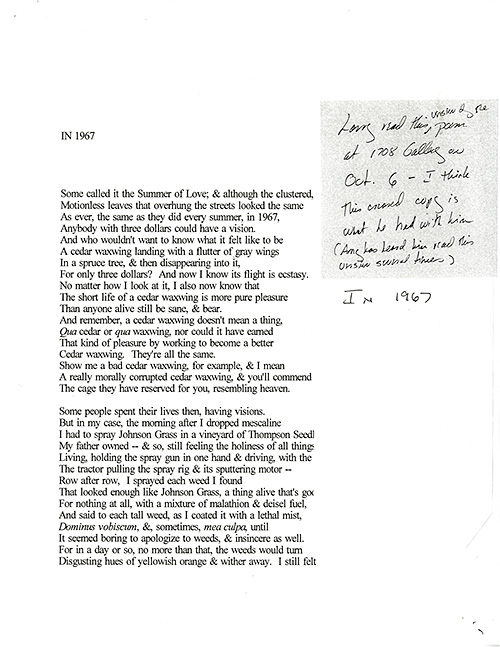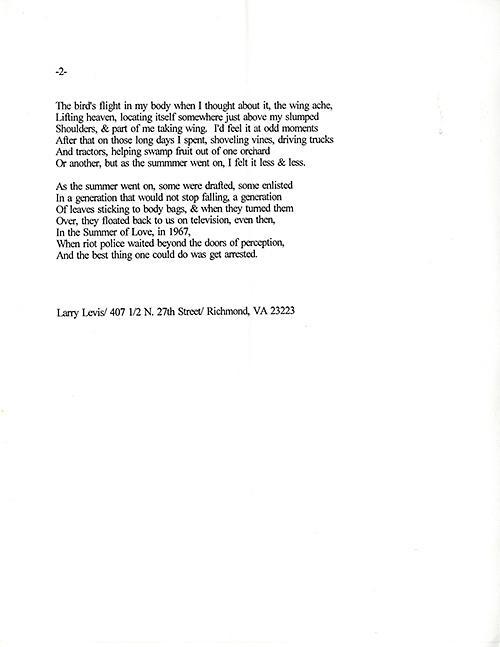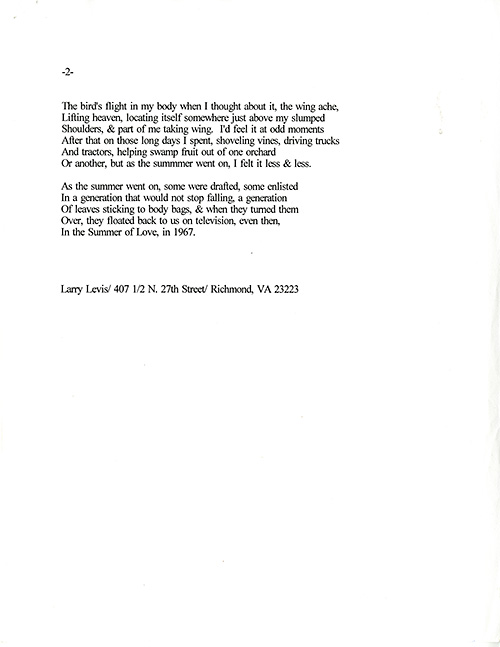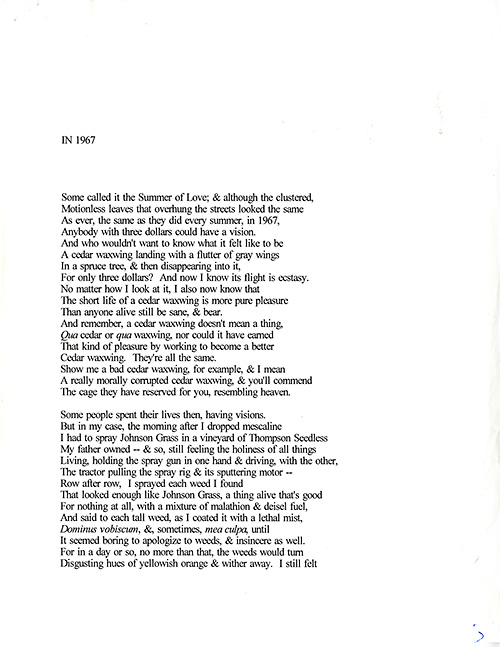 print preview
print previewManuscript: “In 1967”
Commentary by Mary Flinn, Senior Editor
In the summer of 1996, following Larry Levis’s death in May of that year, Amy Tudor, Gregory Donovan, and I took on the task of sorting through his papers and his computer files to try to determine the finished versions of the poems that seemed to be a part of the “all-but-completed manuscript” that Levis had described in a letter to Philip Levine. We were charged with gathering those poems and sending them to Levine, who, with the assistance of Levis’s friend David St. John and another of Levis’s teachers, Peter Everwine, would determine the shape of the manuscript that became Elegy.
Shortly after we began our task, Donovan, who had corralled and sorted all of the typewritten material into numerous folders and binders and downloaded and printed the material saved on computers and on various discs, left to teach in the VCU summer program in Glasgow, Scotland. He had made some preliminary notes on where the poems were stored or found, and also noted, when possible, the dates of last editing indicated by the computer files. Tudor and I were left to try to sort through the various papers, group the drafts into stacks of what we believed to be the order of composition, and determine the “final” shape of each of the poems.
These manuscript variations of “In 1967” illustrate several of the issues we faced that affected our decisions and choices in making a final determination. With this poem, we particularly relied on our memory of a reading Levis gave at an opening event at Richmond’s 1708 Gallery in October of 1995.
The main issues that seemed to worry Levis in the poem as we found it, centered primarily on the configuration of the last ten lines.
The first image presented here, which is taken from a xerox of the material sent to Levine, includes the Post-it note that describes our determination that this variation was the “finished” poem. Tudor remembered Levis reading the poem several times in this incarnation, and the paper on which the poem was printed was folded in such a way that it would have fit into Levis’s coat pocket, which is where we remembered him carrying the poem in October.
 |
 |
This next draft shows a third stanza division and rereferences the Summer of Love to end the poem—an ending that might just be slightly too neat.
 |
 |
The next version reproduced shows a variation that nearly conforms to the published poem, but with significant, alternative lines at the end of the second stanza. Also, the phrase “less & less” appears in the middle of the line rather than serving as the line’s anchor as it was subsequently published. The moving of the phrase seems to allow the slow sibilants to release the air from the deflating summer and turn the poem toward its denouement.
Additionally, the ending of this draft focuses the reader’s attention back to the poem’s speaker, thus imposing a limit of the personal on the poem’s world, which provides an ending that might be too convenient.
 |
 |
These final lines almost seem thrown off, and Levis’s voice dropped when he read them. They appear to be an afterthought that doesn’t entirely provide an ending but rather a stopping point. This exhalation illustrates the passing years the speaker mentions. These lines effectively reflect the ebbing of energy in the late ’60s and the exhausted indifference resulting from nearly a decade of war. ![]()